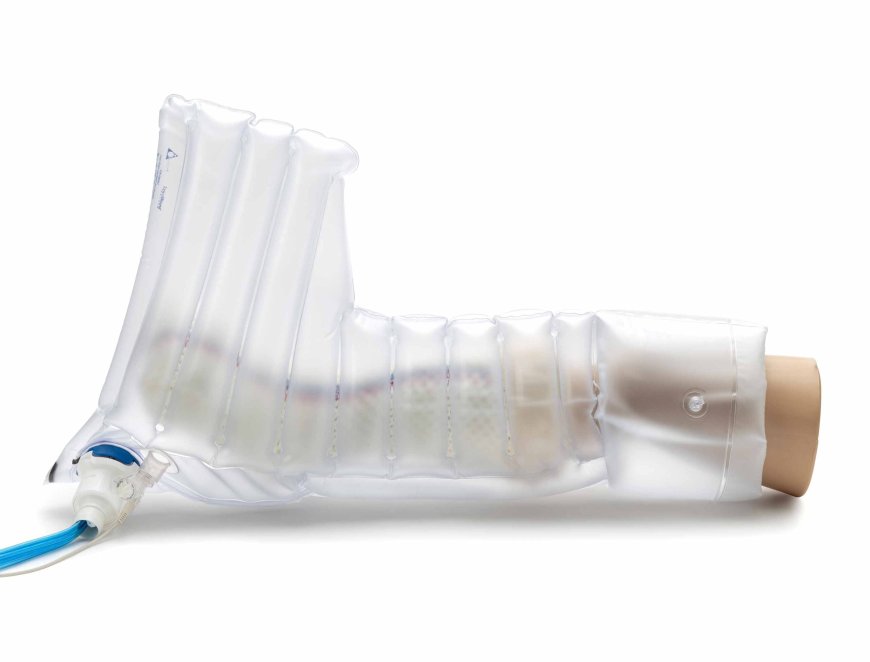Understanding Chronic Wounds, Non-Healing Wounds, and Pressure Ulcer Care!
Caring for chronic wounds, non-healing wounds, and pressure ulcers requires a comprehensive, multidisciplinary approach.

Wound care is a critical aspect of healthcare, mainly when dealing with chronic wounds, non-healing wounds, and pressure ulcers. These conditions can significantly impact a patient's quality of life and require adequate treatment strategies. This article aims to provide a comprehensive overview of these wound types and the best practices for their care.
Chronic Wounds
Chronic wound fails to promptly progress through the normal stages of healing, typically persisting for more than three months. They often arise from underlying conditions such as diabetes, vascular diseases, or autoimmune disorders. Chronic wounds can be particularly challenging to treat due to their persistent nature and the complex interplay of factors that hinder healing.
The management of chronic wounds involves a multidisciplinary approach. Key strategies include:
Assessment and Diagnosis: Accurate assessment of the wound and underlying causes is crucial. This involves a thorough patient history, physical examination, and diagnostic tests such as blood work or imaging studies.
Infection Control: Chronic wounds are prone to infection. Appropriate use of antibiotics, both topical and systemic, is necessary to manage infection.
Pressure Relief: Relieving pressure on the affected area is vital for wounds caused by pressure, such as pressure ulcers. This can be done using specialized mattresses, cushions, and positioning techniques.
Nutrition: Adequate nutrition supports wound healing. Patients may require dietary supplements or consultations with a nutritionist.
Non-Healing Wounds
Non-healing wound is a subset of chronic wounds that do not show signs of healing despite standard treatment. These wounds pose a significant challenge due to their resistance to conventional therapies.
The care of non-healing wounds often requires advanced techniques, including:
Biologics and Growth Factors: These include treatments like platelet-rich plasma (PRP) and recombinant growth factors that can stimulate cell growth and wound healing.
Hyperbaric Oxygen Therapy (HBOT) involves breathing pure oxygen in a pressurized room or chamber. HBOT can enhance wound healing by increasing oxygen delivery to the wound site.
Pressure Ulcers
Pressure ulcers, also known as bedsores or deceits ulcers, are localized injuries to the skin and underlying tissue, typically over bony prominences, resulting from prolonged pressure. They are common in bedridden or limited-mobility patients, such as those in long-term pressure ulcer care facilities.
Effective pressure ulcer care involves the following steps:
Risk Assessment: Identifying at-risk patients using tools like the Braden Scale can help prevent pressure ulcers. Factors considered include mobility, nutrition, moisture, activity level, and sensory perception.
Preventive Measures include regular repositioning, using pressure-relieving devices like specialized mattresses and cushions, and ensuring skin cleanliness and dryness.
Nutrition and Hydration: Adequate nutrition and hydration are critical for preventing and treating pressure ulcers. High-protein diets, vitamins, and mineral supplements can support skin integrity and healing.
Education and Training: It is crucial to educate patients, caregivers, and healthcare providers on pressure ulcer prevention and care. Proper techniques for repositioning, skin inspection, and support surfaces can make a significant difference.
Conclusion
Caring for chronic wounds, non-healing wounds, and pressure ulcers requires a comprehensive, multidisciplinary approach. Early identification, appropriate intervention, and ongoing management are essential to improving patient outcomes and quality of life. Advances in wound care technologies and therapies offer promising avenues for treatment, but the foundation of care remains rooted in a thorough understanding of each patient's unique needs and circumstances. By integrating best practices and innovative therapies, healthcare providers can better manage these challenging conditions and support healing.












